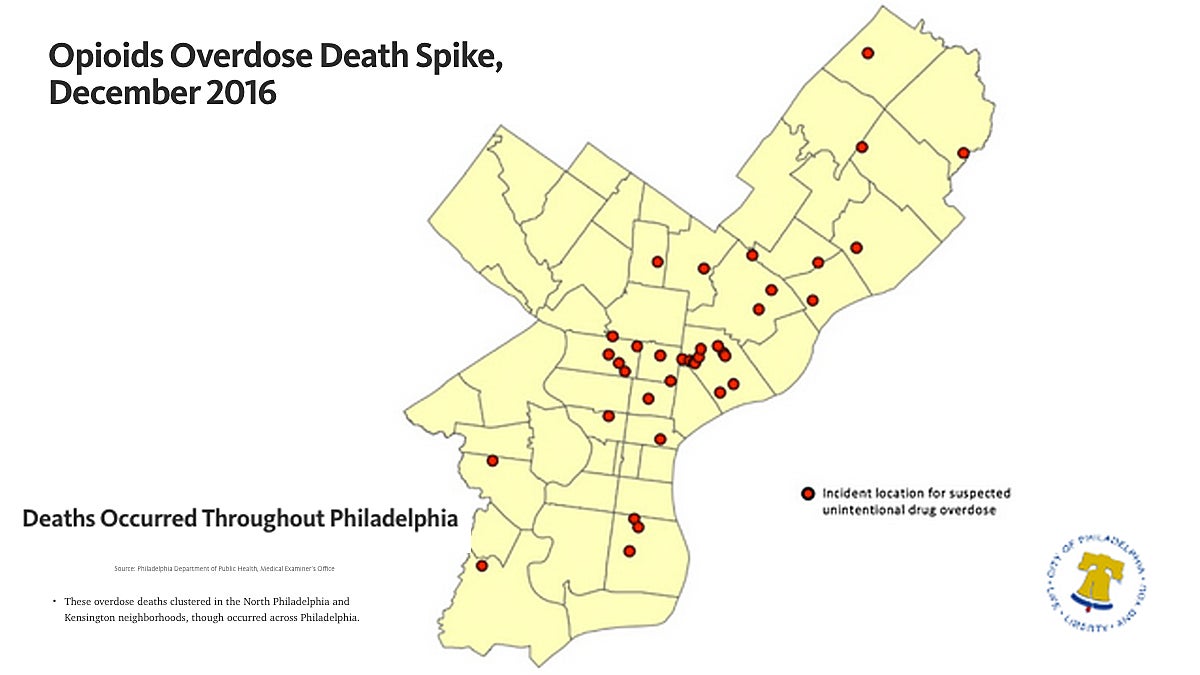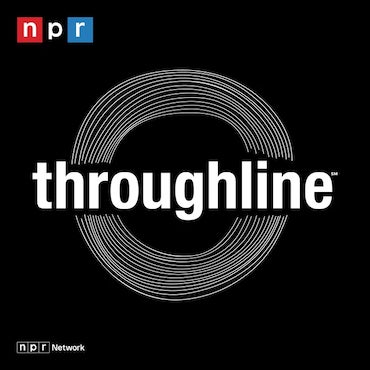Report confirms fentanyl’s deadly grip on Philly region

(Data and images from Philadelphia Department of Public Health)
The first week of December marked an alarming turn in the region’s already worsening drug crisis. On Dec. 1 alone, 12 people died of apparent overdoses, the most deadly single day on record for reported overdoses, according to city officials.
Five days into the month, Philadelphia clocked 35 overdose deaths, far outpacing the typical one or two lethal overdoses reported to the Medical Examiner’s Office each day. The sharp spike in overdoses has sent community health workers to the streets, where they have been arming people with naloxone, the overdose reversal drug, to avert future tragedies.
Now, a new health department report confirms what many had suspected: that fentanyl is gaining a deadlier grip on the region. The synthetic opioid was responsible for a majority of fatalities during that time in December, according to the report. The breakdown can be found here.
Fentanyl is a synthetic opioid that is a lot more potent than heroin and morphine. It’s a lot cheaper, too. For these reasons drug suppliers appear to be mixing it with heroin, according to Jeremiah Daley, regional director of the federally-funded High Intensity Drug Trafficking Area program. A kilogram runs at about a third of the price of heroin, he said.
“You can get far more yield out of that kilogram because it is so potent — 50 to 100 times more potent than heroin — than you can from heroin itself, even at the highest purities,” Daley said.
Some people seek out this more potent mix, while many others don’t even realize the heroin has been been laced. Either way, the mix has been deadly.
Experts also don’t anticipate fentanyl’s presence will let up anytime soon.
Fentanyl surfaced in the illicit drug supply at least once before, beginning in 2005. The region experienced a spike in apparent unintentional overdoses then, too. But Daley said the difference then was they were able to trace the supply to one rogue lab in Mexico.
“Once the lab closed there, the fentanyl supply evaporated,” he said.
Now, the sources are multiple and “ill-defined,” coming out of China, Mexico and through online sales.
“I wouldn’t make a guess as to how many labs are involved,” he said.
This is the new normal. Compounded by a growing prescription and non-prescription drug crisis, health leaders are turning their energy to local education and prevention efforts.
“We need to try to take on the overall problem. This is a very deep seated problem,” Commissioner of Philadelphia’s Health Department Thomas Farley said.
In general, Philadelphia had about 900 overdose deaths in 2016, which is more than three times the homicide rate.
A recently formed mayor’s task force also started meeting last month, in hopes of better coordinating and combating the overall crisis.
“Overall prevention involves first trying to get doctors to prescribe fewer opioids in the first place so fewer people become addicted,” Farley said. “Second, helping people who are currently addicted get into treatment. And third, making naloxone more available so that the antidote can be used to reverse overdoses so people don’t die until they can get into treatment.”
WHYY is your source for fact-based, in-depth journalism and information. As a nonprofit organization, we rely on financial support from readers like you. Please give today.

